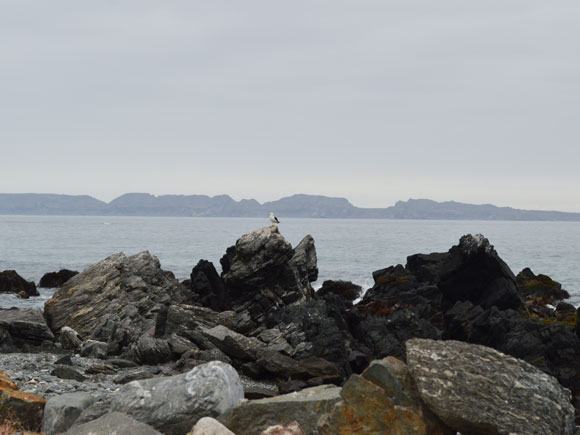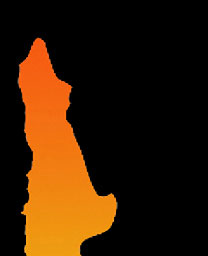

|
Wild Wild Life: Day Two in Punta de ChorosAnother day in Punta de Choros. I took a walk down to the muelle, the wharf where the town's fishermen dock their boats. Just offshore, I could see the Isla Choros, as well as Isla Gaviota and Isla Damas. Getting out to the islands is tricky and requires a little patience. The boat ride is fairly expensive, so it helps to have a group of about 10 people to keep the cost per person to a minimum. It's early spring right now, the off season, so Punta de Choros is deserted. When I arrived at the muelle there were only two other people there waiting for a boat. I decided to wait up to half an hour for more people to show up, but the whole town was empty and desolate, so it didn't look promising. Right as I was about to give up, a group of four people showed up, so we had a little more negotiating power with the captain of the boat. We worked out a price of 13,000 pesos (about $21 US) per person, and this included a close-up look at Isla Choros and a landing on Isla Damas. These islands are part of the Humboldt Penguin National Reserve and access to them is strictly controlled. Isla Choros is off limits to the public, and only researchers and scientists are allowed to land on the island. Visitors can land on Isla Damas, but only a limited number per day and only for a brief period of time. After we got the group together and prepared the boat, we all donned lifejackets and pushed off from the dock. It was a cold foggy morning on the edge of the Atacama Desert, but the invigorating boat ride made up for the gray and gloomy weather. Soon we approached Isla Choros and slowed down to ride alongside the island. The cliffs above us were covered with hundreds of birds, including lots of penguins. They waddled around the precipitous slopes, sometimes in pairs, sometimes in big groups. Other birds included gulls, pelicans, red-legged cormorants, and Guanay cormorants. A little further along we came to some offshore rocks where sea lions rested in the most improbable nooks and crannies of the highest points. A male South American sea lion (Otaria flavescens), the same kind I saw in Valparaíso, raised his massive head to gaze at us curiously as our boat glided silently by his rocky perch. Then the guide pointed to some movement in the thick fields of kelp that bordered the island. "Chungungo!" he called out. I looked over with amazement to see this small sea otter swimming toward us. The Chungungo (Lontra felina) is a highly endangered species and I was not expecting to have the honor of seeing one. Also referred to as a gato marino or gato de mar (sea cat), the chungungo is known in English as a marine otter. The little chungungo raised its head above the water right next to our boat, and indeed, it did have the size and appearance of a house cat. After exploring the coast of Isla Choros, we made the short trip over to Isla Damas and landed at the dock. We only had half an hour to spend on the island, which was nowhere near enough time, even though it was a very small island. A short interpretive trail wound through the coastal desert scrub, but I only had time to hike a small portion of it. Wildflowers were in bloom all along the trail, along with some really stunning cactus flowers in bloom. There were a lot of copiapoa cacti, a short stumpy barrel-shaped cactus that is very characteristic of the Atacama Desert. The island has a very wild and untouched feel about it and I really wanted to explore more, but it is understandable that such a pristine place needs to be protected from human contact. After half an hour, we met back at the boat and reluctantly left Isla Damas, taking off for the return trip back to Punta de Choros. But the adventure wasn't over yet. A humpback whale soon spouted off the starboard side and languidly raised itself out of the water as it passed by our boat. Another whale was right behind it. The we were surrounded by bottlenose dolphins who accompanied us along the way, leaping out of the water in synchronized unison.  The view from my cabaña, looking out at Isla Choros. Back on the mainland, I decided to stay another night in Punta de Choros. My cabaña from the night before was not available, so I found another one next to the wharf. It was a simpler more rustic cabaña, but with a much more dramatic view. I'm sitting on the beach now in front of my cabaña, leaning back against a log, looking out at Isla Gaviota to my left, Isla Choros directly in front of me, and Isla Damas to the right. Waves are crashing on the shore just a few feet in front of me, birds are flying by, and the salty smell of the sea permeates everything.
|
||||||||||
|
|||||||||||
 |
|||||||||||
|
© 2015 Michael Hanrahan
|
|||||||||||


